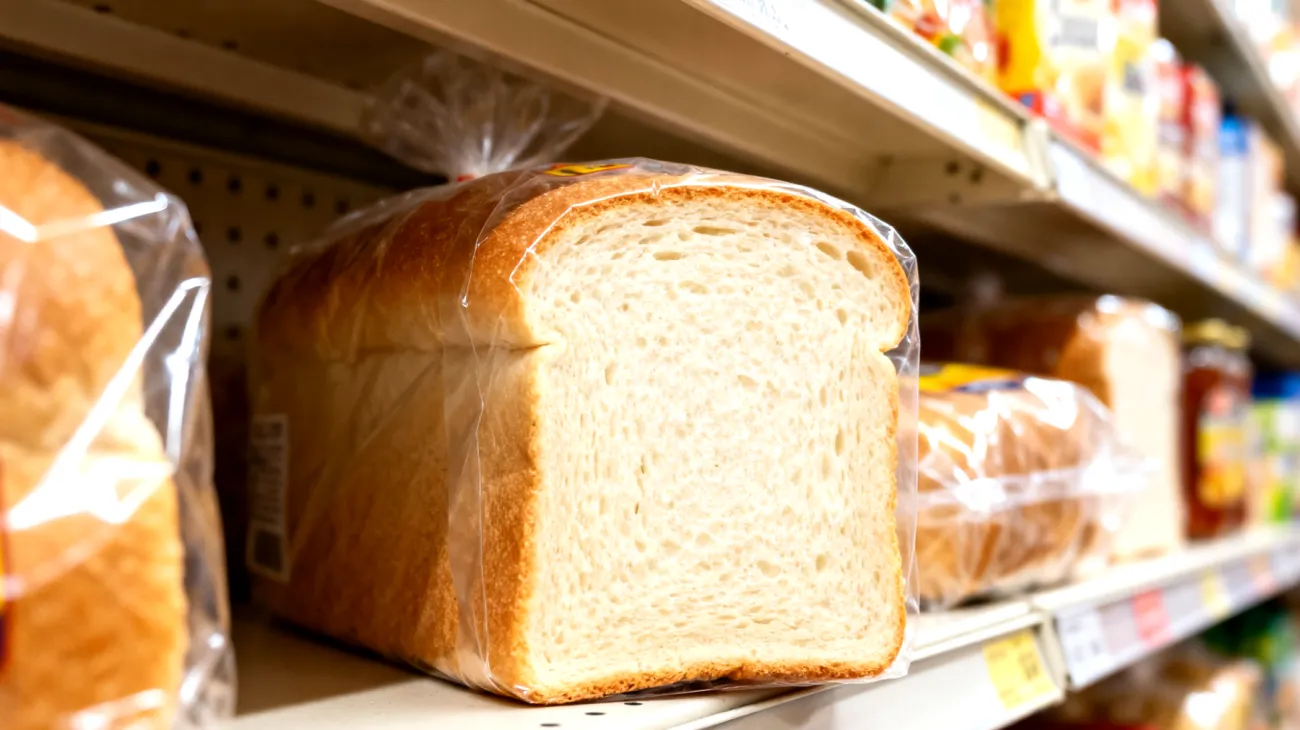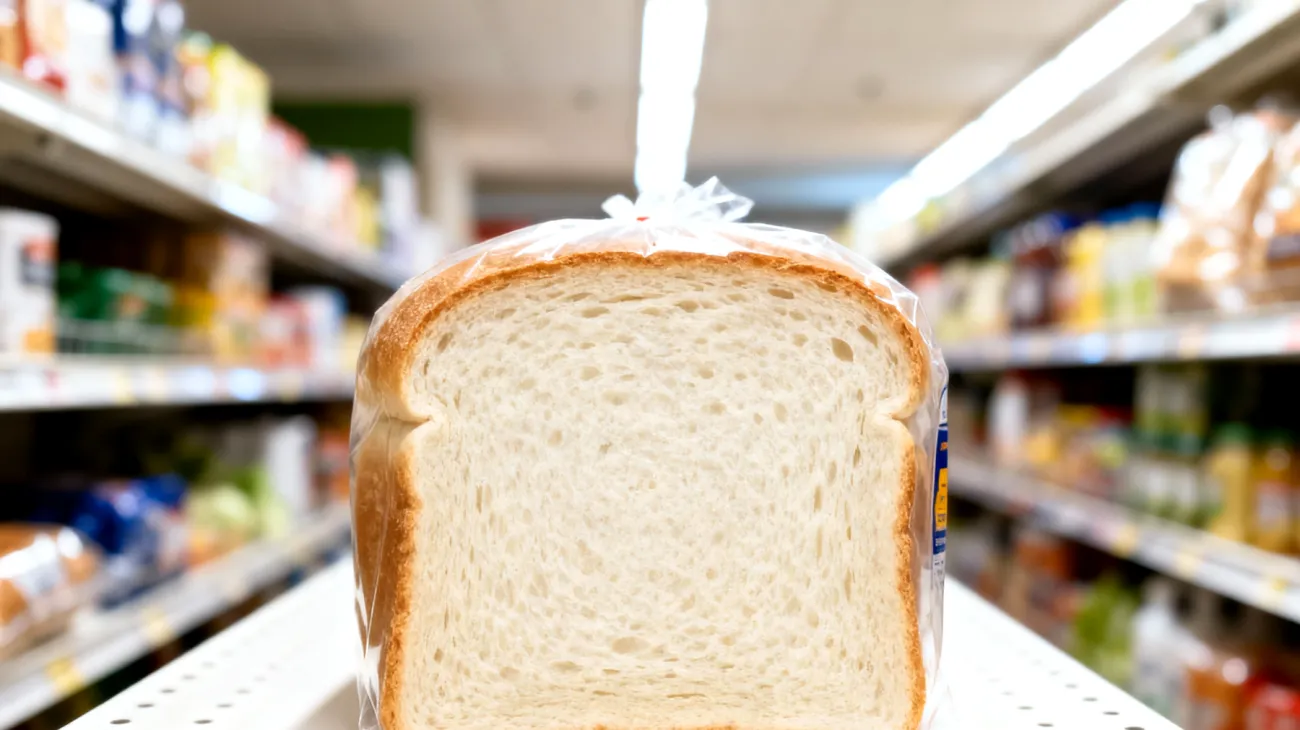Walking through the bread aisle of any UAE supermarket, you’ll notice an overwhelming array of white bread options promising everything from soft textures to enhanced nutrition. Yet behind these appealing labels lies a complex nutritional reality that many consumers struggle to decode. Commercial white bread often contains ingredients and nutritional values that may not be immediately obvious, particularly as UAE consumers become increasingly interested in health and wellness.
The Hidden Sugar Trap in White Bread
Most consumers expect sugar in desserts and sweets, but white bread frequently contains added sugars that may not be evident from packaging alone. These sugars appear under various names in ingredient lists: high fructose corn syrup, dextrose, maltose, and even seemingly healthy-sounding options like honey or molasses. The presence of these sweeteners serves multiple purposes in bread production, including fermentation substrate, flavor enhancement, and creating that golden-brown crust.
When examining nutritional tables, look beyond the “Total Sugars” line. A single slice of commercially produced white bread typically contains between 1 to 4 grams of sugar, with standard formulations averaging around 1.4 grams per 25-gram slice, though some brands reach up to 3 or 4 grams depending on the recipe. Multiply this by the typical two-slice serving, and you’re consuming sugar comparable to what you might find in certain breakfast cereals.
Decoding Sugar Content on Labels
Understanding the nutritional table requires attention to detail. Check the Carbohydrates (of which sugars) section rather than just total carbohydrates, and compare sugar content per 100g across different products for a standardized comparison. Remember that ingredients are listed by weight, so if sugar appears in the first five ingredients, its presence is substantial.
This hidden sugar content becomes particularly concerning for individuals managing diabetes or those trying to reduce their overall sugar intake, especially since bread is a dietary staple consumed multiple times throughout the day.
Sodium: The Silent Concern
Perhaps even more surprising than hidden sugars is the substantial sodium content found in white bread. Bread is recognized globally as a primary source of daily sodium intake, yet many consumers overlook this aspect entirely, focusing instead on calories or fiber content.
A typical slice of white bread contains between 120 to 200 milligrams of sodium. For someone consuming four slices daily through sandwiches and meals, this could comprise up to one-third of the recommended daily sodium limit of 2,300 milligrams established by health authorities including the World Health Organization. The sodium serves multiple purposes in bread production: it enhances flavor, acts as a preservative, and improves texture.
This becomes highly relevant for individuals with hypertension, heart conditions, or kidney issues. While nutritional tables clearly display sodium content, the broader health impact may not be obvious from the label alone, requiring consumers to understand the context of these numbers.
Misleading Health Claims and Marketing Language
The front of bread packaging often features compelling health claims that can create a health halo effect, masking other nutritional concerns. Terms like “fortified,” Enriched with vitamins, or “added nutrients” sound beneficial but may not tell the complete nutritional story.

These marketing phrases often refer to synthetic B vitamins and iron added back after processing removes natural nutrients. Similarly, claims like “no artificial colors” might be technically true, yet the product may still contain other artificial preservatives, emulsifiers, or dough conditioners that aren’t immediately apparent to consumers.
Reading Between the Marketing Lines
The nutritional table provides objective data that can clarify marketing claims. For instance, if a bread claims to be “healthy” but contains 300mg of sodium per slice and 3g of sugar, the nutritional table reveals the reality behind the marketing. Focus on the actual numbers rather than front-of-package promises to make truly informed decisions.
Preservatives and Additives: What the Numbers Don’t Show
While nutritional tables excel at displaying macronutrients, vitamins, and minerals, they don’t quantify the numerous preservatives and additives present in most commercial white bread. These substances, while generally recognized as safe by food authorities, represent additional considerations for health-conscious consumers.
Common additives in white bread include calcium propionate as a preservative, various dough conditioners, and emulsifiers. These ingredients extend shelf life and improve texture but contribute nothing to nutritional value. The full ingredient list, read alongside the nutritional table, provides a comprehensive picture of what you’re actually purchasing.
Making Informed Choices Using Nutritional Information
Effective use of nutritional tables requires a systematic approach. Start by establishing your personal nutritional priorities: are you primarily concerned with sodium, sugar, fiber content, or overall calorie density? Once you’ve identified your key concerns, you can efficiently compare products across the bread aisle.
Nutrition experts typically recommend benchmarks for white bread that include less than 150mg sodium per slice and under 2g sugar per slice as preferable options within this category. However, remember that even these “better” white bread options are generally more processed and less nutrient-dense than whole grain alternatives.
Creating mental benchmarks helps streamline your evaluation process during shopping trips, allowing you to quickly identify products that align with your health goals while navigating the often confusing array of options available in UAE supermarkets.
Practical Shopping Strategies
Transform your bread shopping from a quick grab-and-go decision into an informed choice. Spend a few extra minutes in the bread aisle comparing nutritional tables and ingredient lists across different brands. You’ll likely discover considerable variations in sodium, sugar, and additive content among seemingly similar products.
Take photos of nutritional labels from products you’re considering, allowing for detailed comparison at home. This approach proves especially valuable when shopping with time constraints or in busy stores where careful label reading might be challenging. Focus on the numbers in the nutritional table rather than the appealing claims on the front of the package.
Understanding nutritional tables empowers you to see through marketing claims and make choices aligned with your health goals. The few minutes invested in reading these labels can significantly impact your long-term nutritional intake, particularly for staple foods like bread that you consume regularly. As the UAE market continues to evolve with growing health consciousness among consumers, being able to decode nutritional information becomes an increasingly valuable skill for making dietary decisions that support your wellbeing.
Indice dei contenuti

